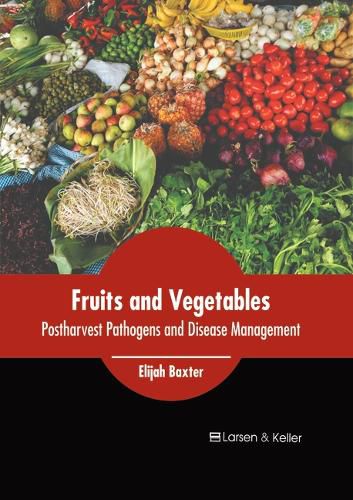Readings Newsletter
Become a Readings Member to make your shopping experience even easier.
Sign in or sign up for free!
You’re not far away from qualifying for FREE standard shipping within Australia
You’ve qualified for FREE standard shipping within Australia
The cart is loading…






Crops are susceptible to various pathogens post harvesting, including bacteria, fungi, and viruses, which can lead to spoilage and economic losses. Effective management strategies are essential to mitigate these risks. Preventive measures such as proper sanitation, temperature control, and humidity management during storage and transportation can help minimize the growth and spread of pathogens. Additionally, implementing good agricultural practices (GAPs) throughout the production process can reduce the initial inoculum of pathogens. Integrated Pest Management (IPM) techniques, including biological control, use of resistant cultivars, and application of safe and effective fungicides or bactericides, are crucial for managing postharvest diseases sustainably. Timely detection and monitoring of potential pathogens through regular inspection and testing play a key role in disease management. This book provides comprehensive insights into the field of disease and pest management for crops. It traces the progress of this field and highlights some of its key concepts and applications. Scientists and students actively engaged in this field will find this book full of crucial and unexplored concepts.
$9.00 standard shipping within Australia
FREE standard shipping within Australia for orders over $100.00
Express & International shipping calculated at checkout
Stock availability can be subject to change without notice. We recommend calling the shop or contacting our online team to check availability of low stock items. Please see our Shopping Online page for more details.
Crops are susceptible to various pathogens post harvesting, including bacteria, fungi, and viruses, which can lead to spoilage and economic losses. Effective management strategies are essential to mitigate these risks. Preventive measures such as proper sanitation, temperature control, and humidity management during storage and transportation can help minimize the growth and spread of pathogens. Additionally, implementing good agricultural practices (GAPs) throughout the production process can reduce the initial inoculum of pathogens. Integrated Pest Management (IPM) techniques, including biological control, use of resistant cultivars, and application of safe and effective fungicides or bactericides, are crucial for managing postharvest diseases sustainably. Timely detection and monitoring of potential pathogens through regular inspection and testing play a key role in disease management. This book provides comprehensive insights into the field of disease and pest management for crops. It traces the progress of this field and highlights some of its key concepts and applications. Scientists and students actively engaged in this field will find this book full of crucial and unexplored concepts.